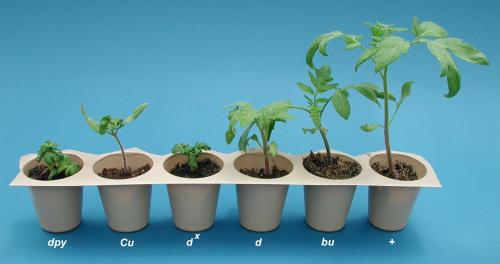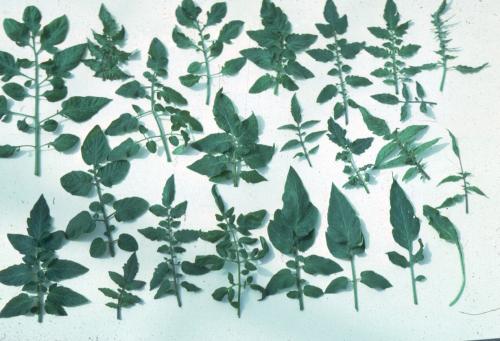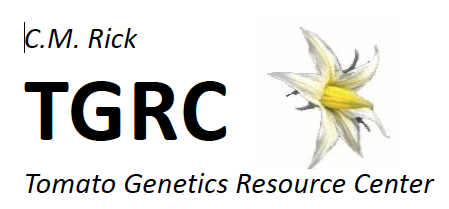
Monogenic Stocks List
Our revised list of monogenic stocks, including 1,058 monogenic stocks (at 630 loci), is available for download in *.xlsx format. The phenotypes of each mutant allele are listed in this accompanying spreadsheet. The list includes morphological mutants, allozyme marker stocks, disease resistance genes and other types of monogenic stocks. The current catalogue, last updated in 2020, is a revision of the stock list published in 2014 in TGC Report vol. 64. Obsolete or inactive items have been deleted, newly acquired stocks have been added, inaccuracies corrected, and gene symbols revised to reflect allele tests or other information. This list includes only accessions we consider to be ‘primary’ sources for individual mutations, usually the original stock in which the mutation was first described, as well as any nearly isogenic lines (NILs) into which it has been bred. Additional mutant stocks are listed under Miscellaneous Stocks, or can be searched under Database Queries/Accession Search. Most stocks are homozygous and true-breeding, however male-steriles, homozygous-lethals, and other mutants that are difficult or impossible to maintain as homozygotes, are propagated via heterozygotes. In these cases, seed are provided in the form of segregating populations, usually F2's. Note: some accessions may be temporarily unavailable during seed regeneration.
For each locus, stocks containing the original mutant allele (--) are listed first, followed by any additional alleles at the same locus (‘prov’ indicates a provisional allele). Synonyms for each gene/allele list the symbols previously used in the literature. Each mutant is assigned to one or more phenotypic categories (see definitions), with the primary classification marked by an asterisk ‘*’. The genetic background of each mutant stock is listed, as well as its isogenicity, i.e. isogenic line (‘IL’), nearly isogenic line (‘NIL’), or is nonisogenic (‘NON’). The origin of each mutation is specified as either spontaneous (‘SPON’), or induced by chemical treatment (‘CHEM’) or irradiation (‘RAD’).
Additional information on individual accessions and genes, including phenotypes, literature references, images, chromosomal locations, etc., can be viewed on our website under Database Queries/Genes.
Mutant Collections
We maintain several major collections of mutants induced in or introduced into standard varieties. The first of these is a collection' of 292 mutant stocks donated by Hans Stubbe from the IPK Gatersleben in the former East Germany beginning in 1958. These mutations were induced by X-ray irradiation of seed in three vintage European fresh market cultivars: Condine Red, Lukullus, and Rheinlands Ruhm. All are indeterminate fresh market cultivars with mostly compound inflorescences, and spherical or slightly oblate, green-shouldered fruit. Fruit of Condine Red have 3-5 locules and average 40g; this variety also contains the recessive anthocyanin loser mutation, which serves as a convenient seedling marker to detect any outcrossing. Lukullus has mostly bilocular fruit averaging 20g; Rheinlands Ruhm fruit weigh 30-80g. Stubbe published a series of six papers from 1957 to 1972 titled "Mutanten der Kulturtomate Lycopersicon esculentum Miller" in the journal Die Kulturepflanze (now Genetic Resources and Crop Evolution) describing the phenotypes of each mutant line, with photographs showing key features, segregation data demonstrating monogenic inheritance, and results of complementation tests with related mutants. The final issue from 1972 contains a comprehensive table listing all the mutant loci.
We also have a set of 464 nearly isogenic mutant lines backcrossed into the cultivar Ailsa Craig, a vintage English glasshouse variety released in 1910. Plants of Ailsa Craig are large, indeterminate vines with mostly unbranched inflorescences bearing small (40-60g) bilocular, green-shouldered fruit. These were synthesized by Les Darby and John Maxon Smith at the Glasshouse Crops Research Institute in the U.K. and are described by Maxon Smith and Richie (1983), Darby et al. (1978), and Darby (1973). Mutants from various sources were crossed at least 5 times (i.e. BC4 generation) to Ailsa Craig.
Finally, we have a small collection of 18 mutant NILs in the background of cv. Micro-Tom. These were developed by Lazaro Peres and colleagues, as described in Carvalho et al (2011).
Researchers are invited to submit seed of verified monogenic mutants to the TGRC for maintenance and distribution. Before naming new mutants or assigning gene symbols, please review the gene naming rules for tomato.

Mutagenesis Lines
We have limited quantities of seed available of double EMS-mutagenized seed in the variety VFNT Cherry.
References:
Carvalho, R. F., Campos, M. L., Pino, L. E., Crestana, S. L., Zsogon, A., Lima, J. E., . . . Peres, L. E. P. (2011) Convergence of developmental mutants into a single tomato model system: 'Micro-Tom' as an effective toolkit for plant development research. Plant Methods, 7, 18.
Darby, L. A. (1973) Tomato breeding at the Glasshouse Crops Research Institute. Ann. Rep. Glasshouse Crops Research Inst. 1972, p.116-129.
Darby, L. A., Ritchie, D. B. and Taylor, I. B. (1978) Isogenic lines of the tomato 'Ailsa Craig'. The Glasshouse Crops Res. Inst. Annual Rpt. 1977, p.168-184.
Maxon Smith, J. W. and Ritchie, D. B. (1983) A collection of near-isogenic lines of tomato: research tool of the future? Plant Molec. Biol. Reporter, 1, 41-45.
Stubbe, H. (1972) Mutanten der Kulturtomate Lycopersicon esculentum Miller VI. Kulturpflanze, 19, 185-230.
